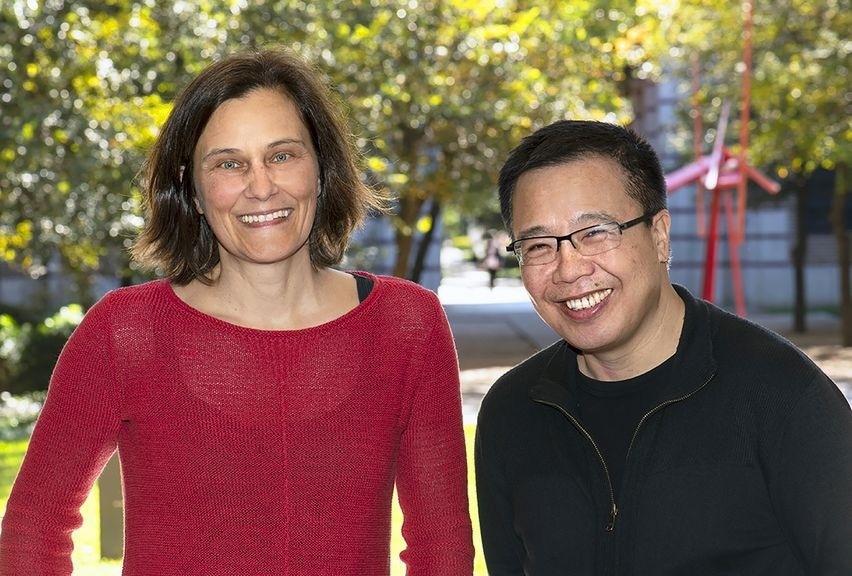Reviewed by Mila PereraSep 21 2022
A unique design principle speculates the features of previously unknown quantum materials. For the first time, with the help of a computer, a strongly correlated topological semimetal was identified.

Silke Bühler-Paschen and Quimiao Si. Image Credit: © Tommy LaVergne/Rice University
Identifying new materials with specific properties, for instance, specific electronic properties required for quantum computers, is a complex task. In the low-temperature lab of TU Wien, different compounds in which highly promising atoms are arranged in specific crystal structures are produced and the material is later analyzed.
Recently, a collaboration between TU Wien, Rice University (Texas), and other international research institutions identified appropriate materials on the computer. From the vast number of suitable materials, novel theoretical methods identified promising candidates.
Measurements carried out at TU Wien revealed that the materials have the necessary properties, and the process works. This is a vital step in quantum material research. The observations have been published in the Nature Physics journal.
Topological Semimetals
In recent years, TU Wien and Rice University in Texas have collaborated in the search for new quantum materials that harbor specific properties. The two research teams in 2017, put forward the first “Weyl-Kondo semimetal,” a material that might play a vital role in quantum computer technology research.
The electrons in such a material cannot be described individually. There are very strong interactions between these electrons, they interfere with each other as waves according to the laws of quantum physics, and at the same time they repel each other because of their electrical charge.
Silke Bühler-Paschen, Professor, Institute of Solid State Physics, Vienna University of Technology
The electrons were highly excited are due to this strong interaction, which could be elaborated only with the help of detailed mathematical methods.
Topology — the branch of mathematics that deals with geometric properties are unaltered by continuous deformation — also performs a vital role in the materials that are now being evaluated.
If the substance is minimally perturbed, electronic states in the material can stay stable. This is why these states are so helpful in practical applications like quantum computers.
Using the Computer to Identify Possible Candidates
Evaluating the behavior of a material’s strongly interacting electrons is unfeasible. Globally, no supercomputer will yet be able to perform it.
Based on the earlier findings, it is now possible to generate a design principle that employs simplified model calculations integrated with mathematical symmetry considerations, and a database of known materials to offer suggestions as to which of these materials might have the theoretically expected topological properties.
This method provided three such candidates, and we then produced one of these materials and measured it in our laboratory at low temperatures. And indeed, these first measurements indicate that it is a highly correlated topological semimetal—the first to be predicted on a theoretical basis using a computer.
Silke Bühler-Paschen, Professor, Institute of Solid State Physics, Vienna University of Technology
Creatively exploiting the system’s symmetries was a key to success.
What we postulated was that strongly correlated excitations are still subject to symmetry requirements. Because of that, I can say a lot about the topology of a system without resorting to ab initio calculations that are often required but are particularly challenging for studying strongly correlated materials. All indications are that we have found a robust way to identify materials that have the features we want.
Qimiao Si, Rice University
Journal Reference
Chen, L., et al. (2022) Topological semimetal driven by strong correlations and crystalline symmetry. Nature Physics. doi.org/10.1038/s41567-022-01743-4.